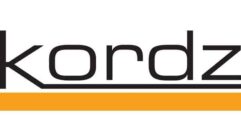Do Architects Know You?
Connections to architects are important for consultants and integrators, but architects need to know us perhaps more than we need to know them.
ARCHITECTS have always been the primary client of traditional pro AV consultants, and they will continue to be for some time. The reason? Pro AV is part of the building design and construction business. Historically, integrators have not depended on architects for business as much as consultants, but to do a design-build project correctly, they should. On the other hand, architects need to know who and what they are getting when they partner with an AV professional.
In recent years, there have been a number of campaigns to get pro AV integrators involved with architects. And integrators should be involved with architects — it’s part of the job of AV: the building design part. Many of these headlines and initiatives are well intentioned, but marketing-oriented, efforts to connect integrators with architects. Some of them even serve independent consultants. But for the most part they are focused on “how to connect” with an architect rather than “what to do” once you’ve gotten the job, and that’s the part that architects should be concerned about.
The Hard Way
The issue takes me back a few years to the time when architects as a rule didn’t know who independent AV consultants or integrators were, what they did, or why they needed them. We had to educate them – one at a time – to understand the implications of what designing an AV-rich building meant architecturally as well as functionally.
Many learned the hard way in four easy (to predict) steps:
- The architect hired no AV providers and found out during construction (or at building occupancy) that the AV needed by the users wouldn’t work in the building they had designed (and got burned by it).
- Next time, they brought in an AV consultant or integrator during construction documents phase when it was too late to make the needed changes in the building design (and got burned).
- On the next project, they hired an AV provider early in the process based on a slick brochure, but didn’t find out until the end of the project that the consultant or integrator they had hired really wasn’t qualified for the job they were hired to do (everyone got burned).
- They then hired a consultant or integrator based on qualifications with a thorough interview process, involved them throughout the design and construction process and (hurray!) ended up with a job well done and a happy client.
Does it really have to be so hard? Apparently so, even today for many architects.
Most AV consultants are fully aware of the four steps above, and integrators have felt the effect of these steps many times since they are often the ones who ultimately have to make something work at the end of the project. The eventual compromise may be due to a poor AV design passed on to them, no AV infrastructure because they were brought in late, or due to an underestimated or nonexistent AV budget — or all three.
Making Delivery Choices
I have been involved on projects where architects or the owner had never experienced a good AV outcome and were convinced that there was no good AV, much less any good AV design and construction process. It was a revelation to them when they experienced how good it could be.
Integrators and consultants alike should be marketing and educating architects as much as possible, since they have the power to bring us in or leave us out of a project’s process. First, architects need to understand that AV providers are as integral to their process as mechanical and electrical systems consultants and contractors are on projects with AV. Next, they need to know when to bring us in. Then they need to know who to hire and, ultimately, how to use them.
Perhaps the project is best suited for an integrator using a design-build process. Perhaps an independent, consultant-led, “design-bid-build” process is best. Sometimes this choice is easy. A $6 million AV system in a building that will take four to five years to design and construct is better suited for an independent consultant. A $200,000 AV system in a renovation that takes six months to design and construct is a no-brainer for design-build.
There are also many AV projects that could appropriately go either way: design-build or design-bid. This is how the world is. But architects can make their lives easier, as well as ours (the AV providers), by understanding the difference between the types of providers (and the processes) and stop mixing apples and oranges when requesting design services. Design services should be requested from either independent consultants or from design-build integrators, not both on the same project.
Further, architects need to learn enough about what we do to be able to evaluate who can do the job. Keeping in mind the examples above, most integrators are not set up for large, long-term architectural projects and the many meetings they require. They may not have the architectural design expertise, such as acoustics, HVAC noise control, lighting and space planning, to deal with a full-on architectural project. For most, it’s just not in their business model. However, they may be the perfect choice for the build part of a large design-bid-build project. There are integrators who do fine in a large architectural project setting, but it is up to the architect pursuing a design-build process to qualify them.
On the other end of the spectrum, most consultants are not set up for lower-end, short-term, fast-track projects either from the standpoint of available time or cost effectiveness to the project. Or maybe they just aren’t well-versed in a particular specialty vertical market.
Beyond choosing the delivery method, it’s a matter of qualifications just like it is for other critical consultants. What’s the firm’s experience with projects of similar size, scope and type? Who’s certified, and how are they certified? What other architects have they worked with? Who’ll be doing the job? Notice what’s missing? The design fee should not be the first qualifier or disqualifier.
Knowing Architects
I’m not saying all architects are not proficient in the pro AV process. There are quite a few who really do get it and who know how and when to hire an AV pro. But there are many still wandering lost beyond the gates of AV’s promised land.
We need to help those architects understand who we are, what we do, why they need us and how to choose us. They don’t need to know about programming control systems and what distribution amplifier to think about. They do need to know about the architectural impact of AV and how to hire the right provider.
And in this educational process, it’s not about consultant vs. integrator — it never should be. Design-build is not evil, and neither is design-bid-build. Besides, either method requires an integrator. The point is to get the best solution for the project and the ultimate client, the end user. Our goal shouldn’t just be to get the job, it should be to do the job and do it well.
Do you know an architect? I hope so, because a lot of today’s AV providers’ work comes from them. Does an architect know you? I hope for their sake they do. Not only do architects often hold the key to us getting the job, but we, the AV providers, are their key to success or failure in the eyes of the client.
FEEDBACK
To comment on this article, email the Pro AV editorial staff at[email protected].
Tim Cape is a contributing editor to Pro AV magazine, the principal consultant for Atlanta-based technology consulting firm Technitect LLC and co-author of “AV Best Practices,” published by InfoComm International. He’s chairman of InfoComm’s ICAT consultant’s council, and an instructor and presenter in AV technology design and management. Contact him at[email protected]










